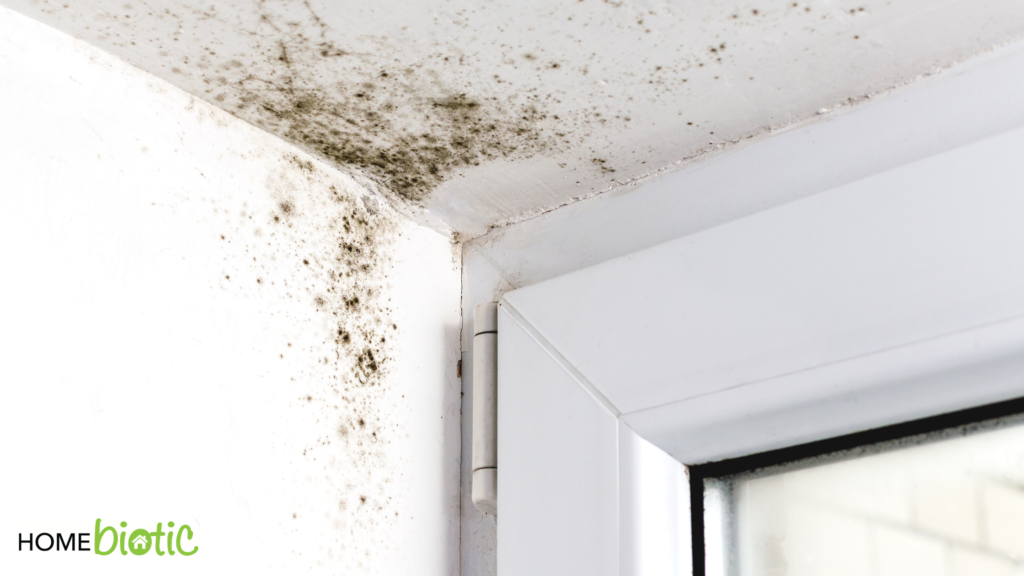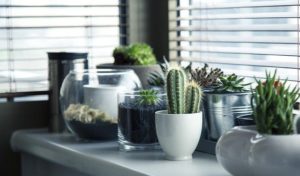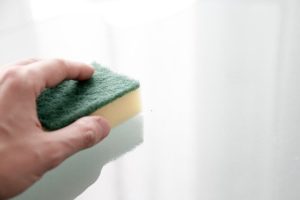
You’re stuck in that cycle. You clean for HOURS then a couple days later those pesky musty odors are back! So we bet you’re wondering: How do I keep my home mold free? How do I keep those stale smells away?
Mold in the home is no joke: it can make you ill, and constantly fighting it can make you feel like you’re living in a dirty home, however hard you scrub. Your home stops feeling like a haven, and starts feeling like a trap.
Mold in the home is no joke: it can make you ill, and constantly fighting it can make you feel like you’re living in a dirty home, however hard you scrub. Your home stops feeling like a haven, and starts feeling like a trap. Click To TweetBut maybe you need to readjust your relationship with mold. After all, mold is a natural organism that’s been on planet Earth for far longer than humans! Mold is going nowhere. Do you know what isn’t natural? An over-clean, sterile home!
While wiping down with bleach and spraying antibacterial cleaner around may seem to beat back the mold, these cleaners can actually do your environment further harm. And though it seems unbelievable, mold isn’t a problem in itself. Unsafe levels of mold is a problem – for both your health and quality of life. Controlling mold in your home is as easy at this 7 step check-list:
 1. CONTROL MOISTURE & CONDENSATION
1. CONTROL MOISTURE & CONDENSATIONMold adores a moist, warm atmosphere, and the right conditions are key to how it reproduces, spreads, and forms new colonies. By taking control of the moisture that enters and circulates your home, you can gain the upper hand, and keep your home – and the air you breathe – healthy. That said, if you are living in a property that has previously been flooded, it may be wiser in the long run to move.
Now is the time to consider:
 2. CONTROL HUMIDITY
2. CONTROL HUMIDITYMold loves humidity, and in your home it’s not enough to simply remove the sources of moisture. When you breathe out, you’re exhaling moisture, and many aspects of daily life, like cooking, and using a clothes dryer, produce more humidity.
The most straightforward thing you can do is invest in one or more dehumidifiers to help control the humidity inside your home, making it far more difficult for mold to multiply. Keeping the humidity in your house at 50% is best – it’s the sweet spot where mold growth is inhibited but not so low that it encourages the growth of harmful bacteria. Also, use an exhaust fan or open a window while you cook.
Do not install a Energy Recovery Ventilator (ERV) purely for dealing with humidity – it’s a common misconception that ERVs work as a dehumidifier – they do not. Instead, they allow the exchange of heat or coolness between the air indoors and the air coming in from the outside, which can be helpful depending on the climate in which you live, but a ERV is no alternative to a dehumidifier.
 3. CLEAN YOUR AIR CONDITIONING UNIT
3. CLEAN YOUR AIR CONDITIONING UNITYou rely on your air conditioning unit to cool your home, and often heat it as well, and it’s easy to take it for granted. When tackling mold, it’s crucial to thoroughly clean and maintain your air con on a regular basis. Unfortunately, mold colonies can live in air conditioning ducts, meaning that the spores and toxins they emit can spread throughout your home.
The Environmental Protection Agency (EPA) recommend hiring a professional to clean your air conditioner if you suspect a mold infestation2. Above all, DO NOT run your air conditioner if you suspect it contains mold – it spreads the problem to other places in your home, and potentially re-contaminate areas of your home you may have already cleaned.
 4. INSPECT INDOOR PLANTS
4. INSPECT INDOOR PLANTSHouseplants can harbor mold, as the moisture and warmth of the soil is very beneficial to growing mold. Although houseplants are often an easy way to improve air quality in your home, if their pots of soil have mold, the health drawbacks can often outweigh the positives.
If you have this issue, consider keeping plants outside or in a dedicated greenhouse and avoid keeping the plants indoors where possible.
 5. TACKLE YOUR CARPETS
5. TACKLE YOUR CARPETSAs stated above, if they have been affected by flooding, you must throw the carpet away, as no amount of cleaning can eradicate the particular water-based molds that can attach to the fibers3.
But if you have carpet in your home that you suspect has been compromised by mold, it’s crucial to clean your carpet more thoroughly, removing any mold spores. With a true HEPA vacuum cleaner, you’re able to eradicate mold spores with the powerful motor and high quality filter.
Remember:
 6. USE BORAX ON FABRIC, SURFACES AND WALLS
6. USE BORAX ON FABRIC, SURFACES AND WALLSBorax is the best substance to use on fabric because it’s a lot gentler than bleach, but it’s also amazing on porous surfaces such as wooden furniture, worktop and table surfaces, and walls4.
Though bleach can work wonders on sinks and floors, it’s simply not suitable for combating mold. Bleach can not:
Unfortunately, bleach also removes the friendly bacteria that normally consume mold, potentially making your mold issue worse!
By choosing borax (sodium borate), you’re using a natural mineral to change the natural pH of the surface or fabric. The alkaline of borax disrupts the environment for the mold, making it unwelcoming. Use a combination of disposable wipes, microfiber cloths and diluted borax to clean porous surfaces. Soak fabric for half an hour in a mix of one cup of borax to one gallon of water before putting in the washer to clean. Always wash your hands after using borax.
Mold is a symptom of an unbalanced home biome. Once any visible mold has been appropriately remediated you need to make sure you make appropriate efforts to rebalance your home, keeping away musty odors & grime. Homebiotic Probiotic Spray rebalances your home biome using non-toxic, chemical free probiotics. Our proprietary formula used soil-based probiotics that are safe for your family, including the furry ones!

Gillian is a former nurse and joined the Homebiotic team as a researcher & science writer. She loves traveling the world and currently lives in Colombia.
Subscribe to our newsletter
© 2024 Homebiotic Inc. All rights reserved. | Privacy Policy | Terms of Use These statements have not been evaluated by the FDA. Homebiotic is not intended to diagnose, treat, cure, or prevent any disease.